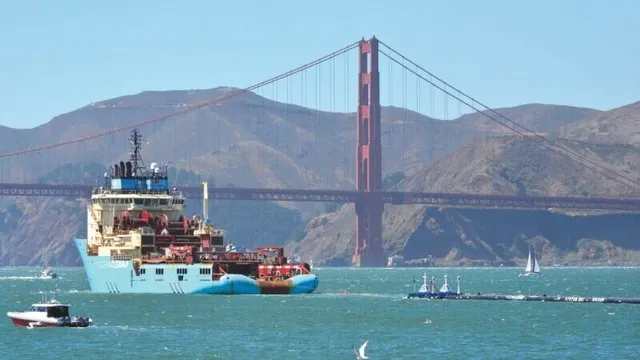
Environmental engineer saves native fruits from extinction in Colombia
2025-03-18 07:49- Gian Paolo Daguer actively promotes native Colombian fruits to prevent their extinction.
- This initiative responds to the global trend of diminishing food diversity as people consume more homogenized diets.
- Conservation efforts are essential not only for safeguarding species but also for preserving cultural and ecological heritage.
Express your sentiment!
Insights
In Colombia, environmental engineer Gian Paolo Daguer is actively working to conserve native fruit species that are at risk of extinction. This effort takes place within a broader global context where food diversification is declining. While the world is increasingly consuming homogenized diets dominated by popular fruits such as mango and pineapple, unique local species are being overlooked, putting them in jeopardy. Daguer uses social media platforms to raise awareness about these fruits and their ecological and culinary significance, particularly focusing on the lucuma, a lesser-known tropical fruit that he advocates for among his followers. Research indicates that several native fruits, including lucuma, face potential extinction due to diminishing popularity. The Humboldt Institute's biologist, Carolina Castellanos, emphasizes the concerns related to the global trend of dietary homogenization. This phenomenon threatens not just these fruit species but also the biodiversity related to ecosystems, making the work of conservationists increasingly vital. Daguer's presence on social media serves as a conduit for information sharing, bringing lesser-known fruits to light, and encourages the public to appreciate and utilize these indigenous foods. The broader implications of such conservation efforts highlight the urgent need to protect biodiversity in the face of industrial agriculture and the exploitation of natural resources. Mining interests in regions like the Clarion-Clipperton Zone are increasingly encroaching on habitats that harbor unique species. This underscores the importance of recognizing the intrinsic value of diverse species, not merely for their economic utility but for their ecological presence. As researchers scramble to identify and describe thousands of newly found species in regions such as the CCZ, the work of conservationists like Daguer directly contributes to maintaining the balance of ecosystems and preserving cultural heritage associated with native species. By educating others about native fruits, Daguer not only supports environmental efforts but also enhances public perception of indigenous foods within culinary contexts. Aiming to promote biodiversity in diets, he hopes to shift consumer behavior away from reliance on a few dominant crops and towards embracing a wider array of food sources. The mission aligns with the ongoing need for sustainable practices that conserve native species, which are critical to the identity and heritage of regions rich in biodiversity, like Colombia.
Contexts
The Clarion-Clipperton Zone (CCZ) represents a significant area of the ocean floor located between Hawaii and Mexico, characterized by its unique biodiversity. This region, extending across approximately 4.5 million square kilometers, is under increasing scrutiny due to the potential for deep-sea mining, which raises concerns about the ecological impacts on its diverse ecosystems. The CCZ is home to many species, including distinct sea cucumbers, sponges, and various forms of benthic fauna, which have adapted to the extreme conditions of the deep-sea environment. Recent studies emphasize the importance of understanding these organisms, as they play crucial roles in the marine food webs and nutrient cycling of the deep ocean, underscoring the need for protective measures against mining activities that could disrupt these habitats. Research conducted in the CCZ has revealed a complex and diverse community structure. The benthic communities exhibit varying levels of diversity, with macrofauna and meiofauna showing significant differences across the zone. These organisms rely on the unique sediment types found within the CCZ, which include polymetallic nodules that accumulate over millions of years, providing not only essential nutrients but also habitats for various marine life. Studies highlight how mining could lead to habitat destruction, further threatening species that have not yet been fully cataloged or understood, potentially resulting in irreversible losses to marine biodiversity. Furthermore, the CCZ serves as a critical area for scientific research, providing insights into the evolutionary processes that shape deep-sea organisms. Many species found in the CCZ are considered endemic, meaning they are not found anywhere else in the world. This unique aspect of the CCZ emphasizes its significance not only for biodiversity but also for understanding ecological resilience and adaptation in extreme environments. Efforts to document these species and their ecological roles are essential for informing conservation strategies, particularly as global interest in deep-sea mining continues to grow. Regulatory frameworks must therefore be developed to balance the potential economic benefits of resource extraction with the need to preserve the ecological integrity of the CCZ. Initiatives such as the International Seabed Authority (ISA) play a pivotal role in overseeing mining activities and establishing guidelines that aim to minimize environmental impact. Comprehensive assessments of biodiversity and ecosystem functions in the CCZ must remain a priority, as they are fundamental to determining sustainable practices that will protect this fragile ecosystem while allowing for responsible resource use.